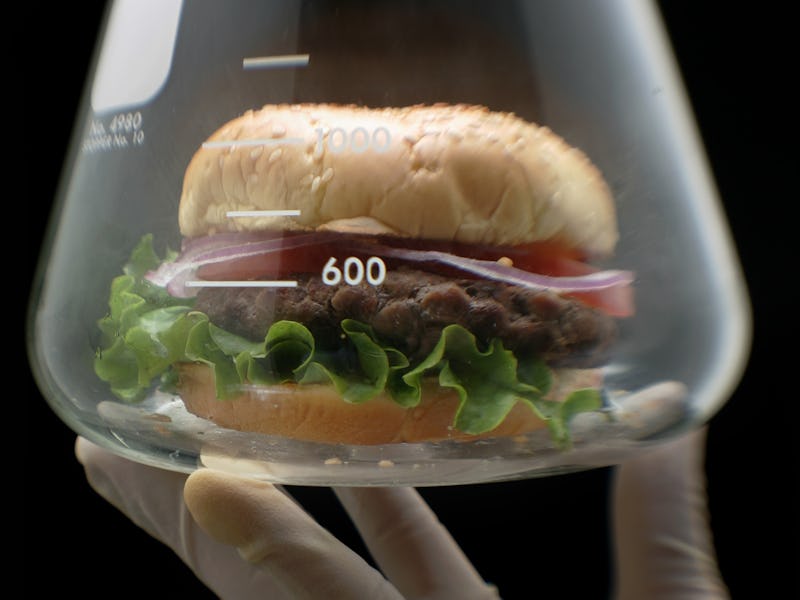When will we eat lab-grown meat? Scientists pinpoint one big obstacle
Plant-based protein has experienced rapid growth but is dwarfed by the size of the global meat protein market.

The protein sector is at a crossroads. On the one hand, global demand for animal protein has never been higher. On the other, meat and dairy already have an outsized hoofprint on the world’s farmlands. And with the climate crisis devastating natural and agricultural resources, we know the Earth’s ecosystems cannot support an expanded traditional agricultural sector.
Plant-based protein has experienced rapid growth but is dwarfed by the size of the global meat protein market.
Enter cellular agriculture. Every day brings news of new venture capital funding, adding over $9.7 billion in global investments. Cellular agriculture encompasses a raft of technologies and approaches that manufacture food and other products normally sourced from plants and animals including dairy proteins, egg proteins, chocolate, honey, red meat, poultry, seafood, leather, silk, and ingredients including sweeteners and flavorings.
A CNN Business report on the future of meat.
Meat and dairy alternatives
Cellular agriculture entered the public eye in 2013 when tissue engineering researcher Mark Post produced the first test-tube burger. This prototype cost hundreds of thousands of dollars but today, the same patty can be made for about 10 euros, or $15. In the past two years, dozens of companies have sprung up in Singapore, Israel, and California to develop consumer products almost biologically identical to those traditionally sourced from plants and animals.
A few products are already in restaurants and on supermarket shelves. T
- The cellular agriculture dairy company Perfect Day brews dairy proteins in bioreactors using yeast, much like a craft brewer produces beer.
- One of the largest plant-based food companies, Impossible Foods, uses cellular-derived soy heme in its signature burger. Their Whoppers are for sale at Burger King and they have just raised a further $500 million in investment capital to scale up production.
- The food-tech startup Eat Just mixes chicken proteins produced through cellular agriculture with plant-based ingredients to create an analog to a chicken nugget.
Some current cellular agriculture technologies involve animal-based inputs such as stem cells and growth media. These products are not necessarily vegetarian, and so may not be universally accepted by consumers for cultural, religious, or dietary reasons.
That said, there is a huge potential to reduce water consumption, energy use, land use, and greenhouse gases. While there are debates as to the extent of the hoped-for environmental benefits, optimists are betting on the fact that carefully designed bioreactors using renewable energy will be more sustainable than a lot of the world’s livestock systems.
The Canadian context — Canada is already an agri-food powerhouse. We export $62 billion in agri-food products annually — which represents 12 percent of our total exports — and the sector employs over 500,000 people. Cellular agriculture offers us a chance to grow this economic position while strengthening domestic food security and helping sustainably feed a growing population.
While the demand for protein has grown, there has also been an increased interest in and demand for meat and dairy alternatives.
Ontario Genomics, alongside researchers at the Food and Agriculture Institute at the University of the Fraser Valley, prepared a report examining the potential role of cellular agriculture in Canada. The report shows cellular agriculture could create up to $12.5 billion in opportunities in food innovation for Canada, which would also create up to 142,000 new jobs.
To realize the potential of the cellular agricultural industry, we must support research and development, foster an entrepreneurial startup culture and create transparent regulatory frameworks for new methods of food production.
The Ontario Genomics report provides three recommendations for helping this sector obtain a foothold:
1. First, we need a national vision and strategy for the Canadian cellular agriculture industry. To become a global leader, it is essential to have an intellectual foundation that can both encourage and support innovation.
2. Second, we must establish a clear and transparent regulatory framework for cellular agricultural products produced in Canada and abroad. This should build on existing regulatory processes by upholding the highest food safety and nutritional standards as well as promoting sustainable development.
3. Third, we must support mechanisms for research and commercial development. Encouraging public-private partnerships, collaborating on public and private investment, developing infrastructure, and supporting training will all be necessary.
Canadian futures — A combination of public awareness and technological advancement in areas like cellular agriculture has given us an opportunity to think about how we can change our food systems for the better.
As a country, we must ask ourselves if we want to be leading this change. If we do not seize this opportunity, we will watch others reap the benefits of innovation while we import cellular agriculture products rather than producing our own and growing Canada’s export position.
This article was originally published on The Conversation by Evan Fraser, Katherine Alexandra Newman, Lenore Newman, Michael von Massow & Robert Newell. Read the original article here.